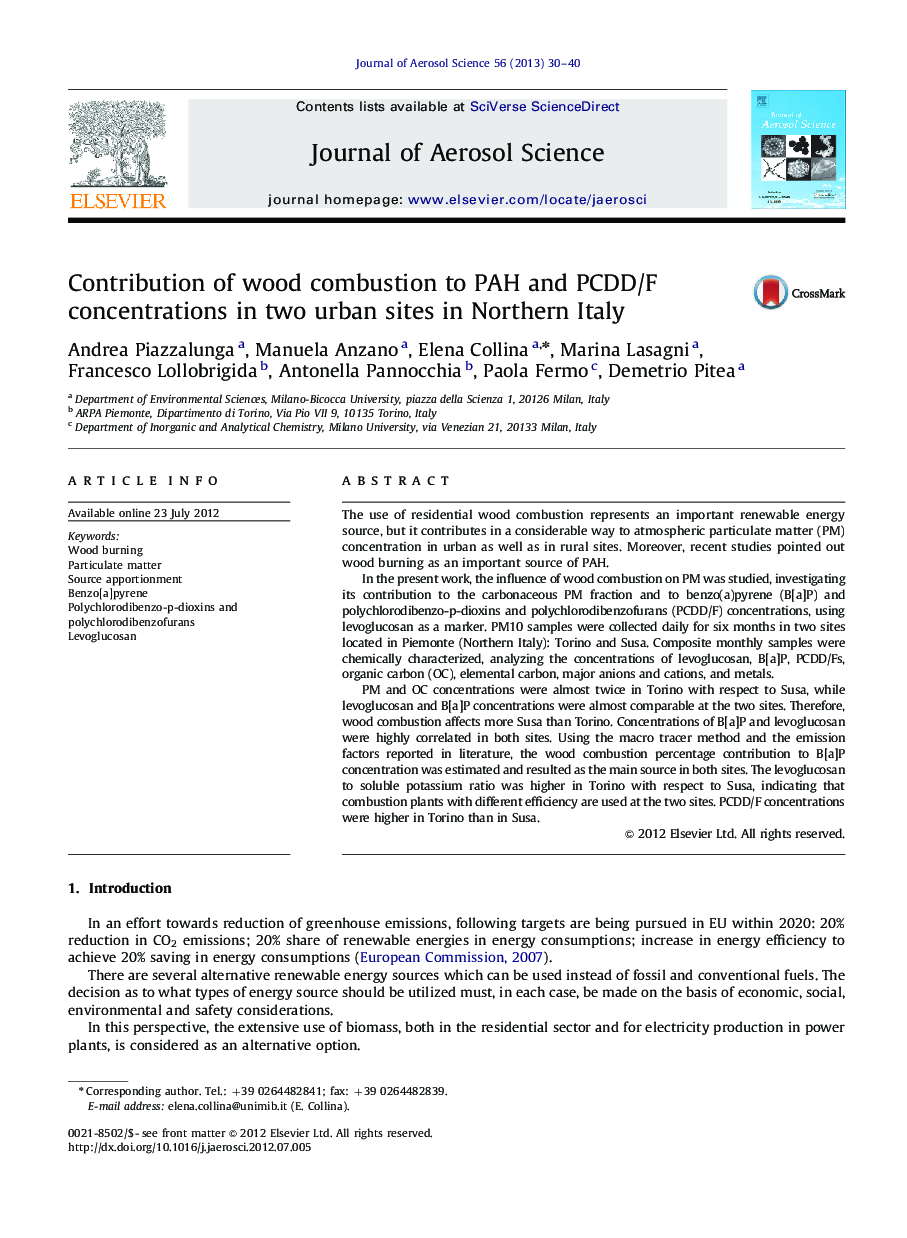| Article ID | Journal | Published Year | Pages | File Type |
|---|---|---|---|---|
| 4452585 | Journal of Aerosol Science | 2013 | 11 Pages |
The use of residential wood combustion represents an important renewable energy source, but it contributes in a considerable way to atmospheric particulate matter (PM) concentration in urban as well as in rural sites. Moreover, recent studies pointed out wood burning as an important source of PAH.In the present work, the influence of wood combustion on PM was studied, investigating its contribution to the carbonaceous PM fraction and to benzo(a)pyrene (B[a]P) and polychlorodibenzo-p-dioxins and polychlorodibenzofurans (PCDD/F) concentrations, using levoglucosan as a marker. PM10 samples were collected daily for six months in two sites located in Piemonte (Northern Italy): Torino and Susa. Composite monthly samples were chemically characterized, analyzing the concentrations of levoglucosan, B[a]P, PCDD/Fs, organic carbon (OC), elemental carbon, major anions and cations, and metals.PM and OC concentrations were almost twice in Torino with respect to Susa, while levoglucosan and B[a]P concentrations were almost comparable at the two sites. Therefore, wood combustion affects more Susa than Torino. Concentrations of B[a]P and levoglucosan were highly correlated in both sites. Using the macro tracer method and the emission factors reported in literature, the wood combustion percentage contribution to B[a]P concentration was estimated and resulted as the main source in both sites. The levoglucosan to soluble potassium ratio was higher in Torino with respect to Susa, indicating that combustion plants with different efficiency are used at the two sites. PCDD/F concentrations were higher in Torino than in Susa.
► Influence of wood combustion on ambient air particulate matter. ► Wood combustion contribution to benzo[a]pyrene and dioxins. ► Wood combustion affects more alpine sampling site.
